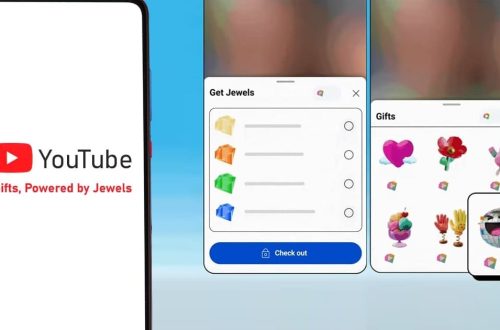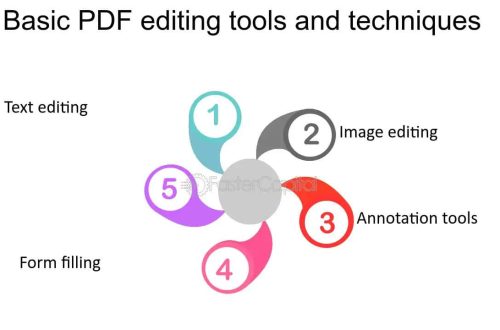There are a lot of posts written about blogging success, but perhaps not quite as many written on why blogs fail. Since I believe failure is such a great part of the entrepreneurial learning process, and you really only fail when you quit, I thought I’d write an “homage” to failure if you will. Here you go: 33 ways to fail at blogging:
- Not having a plan. Your blog just be a business some day, but you should run it like one now. That means spend time writing down your goals (like physically writing them down!) about where you hope to be in a month, six months, a year, etc.
- Stop trying. I can’t tell you how many blogs I’ve started, worked on regularly for about three weeks, and abandoned. Of course, sometimes it is better to realize when you’ve hit a brick wall, but other times it just takes perseverance to break through The Dip and push on.
- Stop caring. Apathy for your topic is a close second to #1, but it is slightly different. Lack of caring happens when you forget why you’re blogging in the first place–the energy for your topic is lost; all the great ideas fleshed out, overworked, and drained.
- Having the wrong expectations. Similarly, if you have impossibly high expectations for your site that don’t align with the real world, burnout and apathy might be nearby.
- Bad design. Having a site that projects the wrong image can be like trying to open a 5-star restaurant in a strip-mall. Possible? Sure. Likely to succeed? Probably not.
- Too many ads. Corbett Barr of Think Traffic likes to start his students on a “no ads” blogging approach, only adding them in when the blogs are ready. “Ready” is obviously subjective, but it seems to me like having fewer than 2,000 visits a day might be pushing it.
- Not having a big orange RSS button. This is a small thing seemingly, but I’m of the type where if I don’t have a super-easy way to subscribe to your content, I won’t come back (it’s not that I don’t love you, it’s just that I’ll forget). It doesn’t need to be orange, but you know…
- Writing bad headlines. Or at least, not writing awesome headlines. Take the time to read how to write the best headlines possible, and practice them.
- Not optimizing your About page. People who read your stuff want to read about who you are. Some guys can get away with being a meme, but you’re a person. Give us a big ‘ol mugshot of yourself and a couple paragraphs about why we should want to buy you a beer.
- Not cross-linking your posts. Blogging–and the web, if you think about it–is ALL about links. Don’t go overboard, but remember that once you get someone on your site, you don’t want them to leave. Link to old posts, new ones, and pages on your site they might enjoy. Lead them to your product, if you have one.
- Not setting up systems. I love systems. My first post at ProBlogger was on blogging systems, and I recommend it now, too.
- Having a site that looks like an MFA (Made-for-AdSense) site. Unless, of course, you’re solely trying to blog for profit (nothing wrong with that, but it’s much harder to do when it’s a personal blog). If your design reeks of over-the-top AdSense ads, banners, and in-text link ads, it’s distracting and off-putting for visitors.
- Bad SEO. Sure, you might not be trying to focus on organic search results for your “personal experiences” blog, but there’s a reason Google’s algorithm is such a proprietary equation: it KNOWS what’s good and bad, when it comes to content. If you haven’t taken at least a little time to optimize your content for a few keywords and add links, it can seem stale, vague, and boring for your readers.
- No images. If there’s one universal truth that seems to still be pervasive in blogging (and even then there are exceptions), it’s “have at least one image in every post.” Images add color, depth, and flow to otherwise stagnant content.
- Bad writing style. Your writing should certainly reflect who you are, but I doubt you talk in long-winded paragraphs. You probably also don’t sound like an advanced legal professor–tone it down, trim it down, and let us “hear” who you are.
- Bad content layout. Going with the prior example, you shouldn’t let large paragraphs of content into your writing. Take a look at the LiveHacked blog, Jeff Goins’ blog, and read some Ernest Hemingway to get an idea for what short, easy-to-read text is all about.
- Not using lists. This concept is not something that needs to be in every post, but if you visit some of the more popular blogs (including this one!), you’ll often see that the most popular content is blog posts organized into lists.
- Having too many categories. The guys over at Thesis have a great policy on how many categories a blog should have. You’re not Huffington Post or Yahoo! Don’t have a thousand categories with one post in each.
- Placing posts in too many categories. Also, don’t stick each post into every single possible category that seems like it might fit. Give each post one–maybe two–categories. It will help Google as well as your visitors find information faster.
- Being annoying. Some bloggers have an “air” of rudeness to their writing–let them do it, because they’ve figured out how. For you, it’s better to be nice, humble, and kind–especially to your commenters.
- Not having comments enabled. This is certainly a topic for debate, but I like to be able to leave a comment (looking at you, Mr. Godin!). I do understand, however, how huge sites can’t maintain the massive amounts of comments–and spam–that comes in. But you’re not that big yet–turn them on!
- Placing too much on the sidebars. Again, this fault seems to plague “little-guys-trying-to-be-big-guys.” It’s not that you don’t have as much to say, it’s just that in the early years of your site, you need to be especially clear, almost to the point of minimalistic, about your site design.
- Not capturing visitors’ attention. I highly recommend going through a copywriting course like Copyblogger–even if you’re writing about your trip to Africa, you can probably learn a few tips about drawing your readers in with a great writing style. See #9 and #14.
- Not building a list. If you ever want to build a site that can generate income–even a little–start building a mailing list now. Even without ads, your visitors–if you’re offering great content–want that extra “connection” with you. Let them sign up to a mailing list. (I prefer MailChimp or Aweber).
- Not engaging with visitors. Engagement can look like following up to commenters, starting dialogue through social media, etc.–just be available to your readers when they want to discuss your topic.
- Not adding value. This one’s easy–if you’re not giving me a reason to come back, I won’t.
- Too much self-promotion. If your site only links to other posts you’ve written on your site, and completely disregards the fact that there might be another blog with a somewhat similar topic, and your Twitter account is full of “check me out!” tweets, I’m gone like Donkey Kong.
- Not enough self-promotion. Okay, okay–there is another side to the coin. You must take the time (I recommend an hour a week) to practice reaching out, engaging, and yeah–self-promoting your work. You did work hard on it, right?
- “Shiny Object Syndrome.” There’s always another course to sign up for, always another product to buy teaching yada yada, and there’s always another traffic-generation tactic that you must try and implement now. Please resist–I’ve tried many (not all, but more than I should have). These products and “shiny objects” aren’t bad, they’re just probably bad for where you are in your blogging journey. Instead, read #25.
- Not guest posting. Guess what? The best way of generating traffic, attention, and leading visitors back to your site is free. It’s called guest posting, and if you’ve not really put in the time to try it, check out Jon Morrow’s course at www.guestblogging.com (yeah, I know I just said not to grab at the shiny objects, but at least check out his free videos. He has quite a story, too!).
- Not interacting with other “small fries.” Or “medium fries,” or “large fries” (or “ProBlogger-size fries”). I’m currently working with a few bloggers who have similar niche markets and are of similar sizes to my blog. If you’re not reaching out to these people, and trying to build relationships, don’t come crying to me when the world moves on without you.
- Not reading. Read more. Period. Whether it’s news related to your industry, other blogs (I have about 300 blogs I read in my RSS reader), or just awesome fiction thrillers, you need to read as much as you can. It helps your understanding of your marketplace and it can greatly enhance your writing abilities.
- Not writing enough. Back to #1 and #25, if you feel stuck, write. If you feel like quitting, write. If you feel like you’ve made it (yay! My post just went live on ProBlogger!) write. There’s never enough you can write–since blogging is directly monetized through words, you need more of them to make more of it. Kapeesh?
There you go–33 things to go work on right now. And I do realize there are more–many more. Let’s get it going in the comments section and see what else you can come up with (and what I forgot!).
You can read more from Nick Thacker on LiveHacked.com, where he publishes tips and tricks to hack your life and make it more suitable to your lifestyle.



